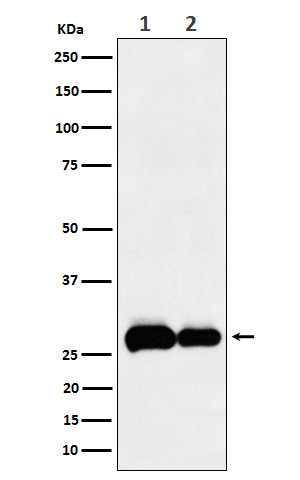Prolyl hydroxylase that mediates hydroxylation of proline residues in target proteins, such as PKM, TELO2, ATF4 and HIF1A (PubMed:
19584355, PubMed:
21620138, PubMed:
21483450, PubMed:
22797300, PubMed:
20978507, PubMed:
21575608). Target proteins are preferentially recognized via a LXXLAP motif. Cellular oxygen sensor that catalyzes, under normoxic conditions, the post-translational formation of 4- hydroxyproline in hypoxia-inducible factor (HIF) alpha proteins (PubMed:
11595184, PubMed:
12181324). Hydroxylates a specific proline found in each of the oxygen-dependent degradation (ODD) domains (N- terminal, NODD, and C-terminal, CODD) of HIF1A (PubMed:
11595184, PubMed:
12181324). Also hydroxylates HIF2A (PubMed:
11595184, PubMed:
12181324). Has a preference for the CODD site for both HIF1A and HIF2A (PubMed:
11595184, PubMed:
12181324). Hydroxylation on the NODD site by EGLN3 appears to require prior hydroxylation on the CODD site (PubMed:
11595184, PubMed:
12181324). Hydroxylated HIFs are then targeted for proteasomal degradation via the von Hippel-Lindau ubiquitination complex (PubMed:
11595184, PubMed:
12181324). Under hypoxic conditions, the hydroxylation reaction is attenuated allowing HIFs to escape degradation resulting in their translocation to the nucleus, heterodimerization with HIF1B, and increased expression of hypoxy- inducible genes (PubMed:
11595184, PubMed:
12181324). ELGN3 is the most important isozyme in limiting physiological activation of HIFs (particularly HIF2A) in hypoxia. Also hydroxylates PKM in hypoxia, limiting glycolysis (PubMed:
21620138, PubMed:
21483450). Under normoxia, hydroxylates and regulates the stability of ADRB2 (PubMed:
19584355). Regulator of cardiomyocyte and neuronal apoptosis. In cardiomyocytes, inhibits the anti-apoptotic effect of BCL2 by disrupting the BAX-BCL2 complex (PubMed:
20849813). In neurons, has a NGF-induced proapoptotic effect, probably through regulating CASP3 activity (PubMed:
16098468). Also essential for hypoxic regulation of neutrophilic inflammation (PubMed:
21317538). Plays a crucial role in DNA damage response (DDR) by hydroxylating TELO2, promoting its interaction with ATR which is required for activation of the ATR/CHK1/p53 pathway (PubMed:
22797300). Also mediates hydroxylation of ATF4, leading to decreased protein stability of ATF4 (Probable).

